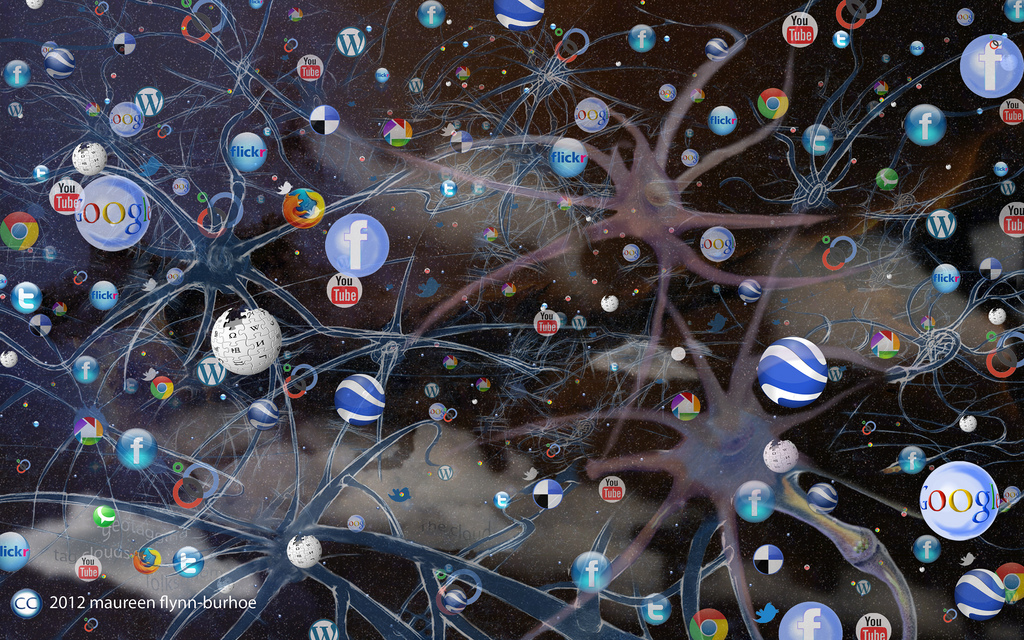
Both in the U.S and globally, people are accessing the web more frequently and for longer periods, using smartphones, tablets, gaming consoles, and smart TVs. We’re still using PCs as well, but personal computer usage of social media is just about the only category that’s down: 4 percent fewer Americans connected to the Internet via a PC in 2012, while 82 percent more connected via the mobile web and 85 percent more connected via a mobile app.
[aditude-amp id="flyingcarpet" targeting='{"env":"staging","page_type":"article","post_id":583486,"post_type":"story","post_chan":"none","tags":null,"ai":false,"category":"none","all_categories":"big-data,business,media,mobile,social,","session":"B"}']Overall, total time on the Internet in 2012 is up 21 percent to 520 minutes a month. A staggering 17 percent of that is spent on one service: Facebook.
And it’s social networks that are seeing huge growth, with 85.5 million accessing social networks via a smartphone or tablet app in July 2012 versus 44.8 million in July 2011, and 81.1 million using the mobile web in July 2012 compared to 43 million in July 2011. PC use is still the largest, with 171.8 million Americans using a laptop or desktop machine to get social online, but that’s just slightly up from 163.6 million in 2011.
AI Weekly
The must-read newsletter for AI and Big Data industry written by Khari Johnson, Kyle Wiggers, and Seth Colaner.
Included with VentureBeat Insider and VentureBeat VIP memberships.
Interestingly, while Facebook’s PC’s audience declined by 4 percent in 2012, Twitter’s grew 13 percent. Google+ grew 80 percent, and Pinterest grew 1,047 percent, but that has a lot more to do with the growth cycles of those two sites than transformative change in how users are accessing them. Facebook’s app audience increased by 88 percent, and its mobile web audience increased by 85 percent, more than offsetting the slight PC decline, and underscoring Facebook’s recent efforts to monetize its mobile services.
Another insight from Nielsen: Pinterest’s growth flattened — and even disappeared in early 2012. It had grown from an audience of perhaps 2.5 million in July 2011 to almost 25 million in February 2012, but it plateaued at that level for three months, and then actually decreased in May before taking off again in June.
Still, Pinterest is a massive force online, especially among women, who make up 70 percent of its web audience, 84 percent of its app users, and 72 percent of its mobile web audience — and spent about 2.1 billion minutes on the site in 2012.
The second-screen phenomenon is on the increase as well, as TV viewers continue to use Twitter as a way to sound off, comment on, and chat with others about what they are watching:
Almost a quarter of 18- to 34-year-olds comment on social media sites about their TV shows while they’re watching, and the numbers are growing through 2012.
[aditude-amp id="medium1" targeting='{"env":"staging","page_type":"article","post_id":583486,"post_type":"story","post_chan":"none","tags":null,"ai":false,"category":"none","all_categories":"big-data,business,media,mobile,social,","session":"B"}']
That’s a low percentage, globally, with 47 percent of people in Asia-Pacific countries using a second screen while watching TV, and a staggering 63 percent of people in the Middle East and Africa chatting online while watching.
The surveyors talked to 1998 U.S, adults, but the global component of Nielsen’s report surveyed 28,000 people in 51 countries.
The full report is available from Nielsen.
photo credit: ocean.flynn via photopin cc
[aditude-amp id="medium2" targeting='{"env":"staging","page_type":"article","post_id":583486,"post_type":"story","post_chan":"none","tags":null,"ai":false,"category":"none","all_categories":"big-data,business,media,mobile,social,","session":"B"}']
VentureBeat's mission is to be a digital town square for technical decision-makers to gain knowledge about transformative enterprise technology and transact. Learn More